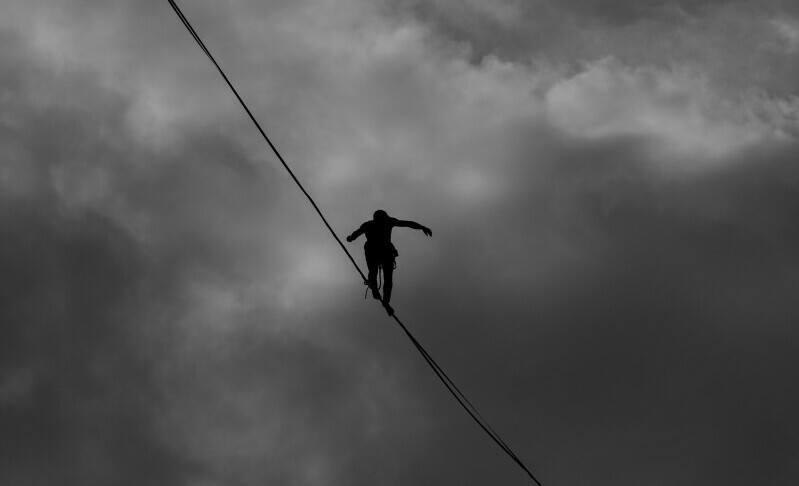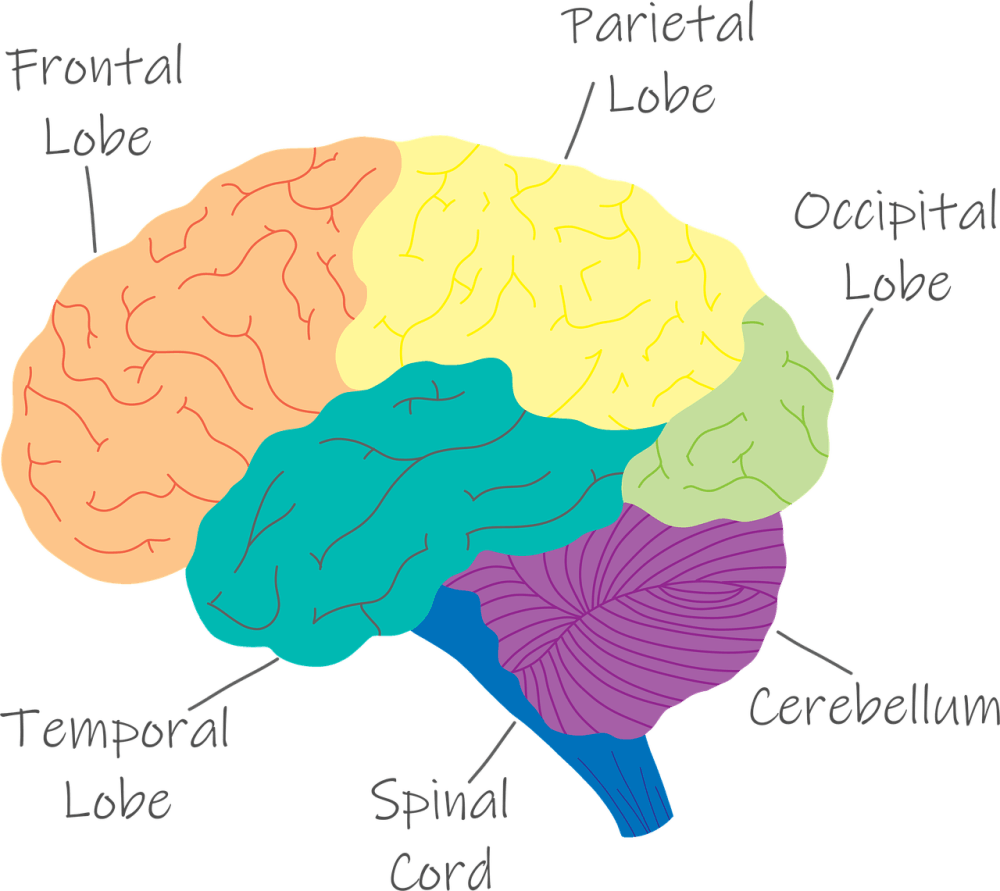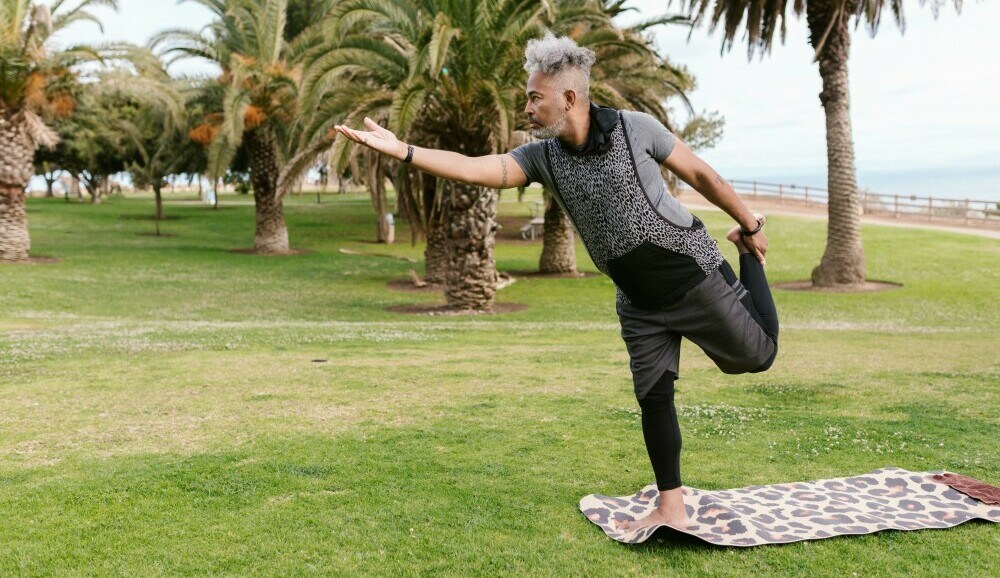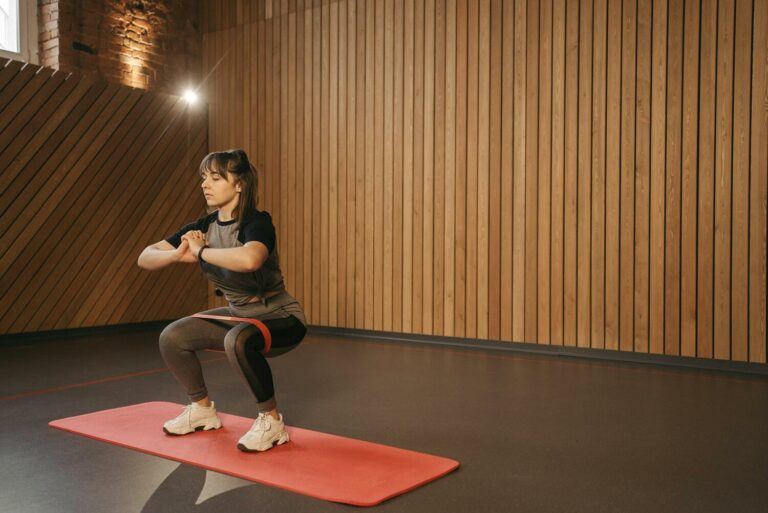Have you ever wondered how you manage to stand upright, walk smoothly, or even perform amazing feats of athletic agility?
The answer lies in a complex system known as balance.
It’s a fundamental skill that allows us to navigate the world with confidence and control.
But what exactly is balance, and why is it so important?

Understanding the Importance of Balance
Balance can be defined as the ability to maintain your center of gravity over your base of support. It’s crucial for various everyday activities, including:
- Walking, running, and climbing stairs
- Playing sports and engaging in physical activities
- Performing daily tasks like reaching for objects or carrying groceries
- Maintaining good posture and preventing falls

The Complex World of Balance
Achieving balance is no easy feat. It requires the coordinated effort of several systems in our body, including:
- The Brain: The cerebellum, located in the lower back of the brain, plays a central role in coordinating movement and balance.
- The Sensory System: Information from our eyes (vision), inner ear (vestibular system), and muscles and joints (proprioception) is constantly sent to the brain, providing crucial feedback about our body’s position and movement in space.
- The Musculoskeletal System: Muscles and joints work together to maintain posture and adjust our body position when needed.

Static vs. Dynamic Balance
There are two main types of balance:
- Static balance: This refers to the ability to maintain your center of gravity over a fixed base of support, like standing on one leg. This can be demonstrated by activities such as standing on one leg or holding a yoga pose.
Good static balance requires strong core muscles, as well as coordination and proprioception (awareness of the body’s position in space).

- Dynamic balance: This involves maintaining balance while moving, such as walking, running, or jumping. It requires the coordination of various muscles and sensory systems to adjust to changes in body position and movement.
Developing dynamic balance can help enhance athletic performance, reduce the risk of falls, and improve overall functional movement.

Benefits of Balance Training for Everyone

Balance training isn’t just for athletes or individuals at risk of falling. It offers a wide range of benefits for people of all ages and abilities, including:
- Improved stability and coordination: This leads to increased confidence in everyday activities and reduced risk of falls.
- Enhanced athletic performance: Balance training can improve agility, reaction time, and overall performance in various sports.
- Stronger posture and functional fitness: Strengthening core muscles through balance exercises leads to improved posture and better functional movement for daily activities.
- Cognitive benefits: Studies suggest that balance training may improve memory, attention, and cognitive function, especially as we age (Source: https://www.ncbi.nlm.nih.gov/pmc/articles/PMC3956196/).
Mastering the Art of Balance Training
Here are some basic balance exercises suitable for most individuals:
Building a Strong Foundation Exercises
These exercises are foundational for building overall strength and stability in the body.
It’s important to perform them with proper form and technique to avoid injury and maximize their benefits.
| Exercise |
|---|
| Single-leg stance: Stand on one leg for as long as possible, holding onto something for support if needed. |
| Heel-toe walk: Walk heel-to-toe, taking small controlled steps. |
| Side plank: Hold a side plank position for as long as possible on each side. |
| Walking over uneven surfaces: Try walking barefoot on grass, sand, or a balance beam (gradually increase difficulty as you progress). |
Tools for Enhanced Training
If you’re looking to add some variety and challenge to your balance routine, various tools can help:
- Balance boards: These wobble boards challenge your core and proprioception as you try to maintain balance.
- Bosu balls: These half-exercise ball, half-stability trainer can be used for various balance and strength exercises.
- Foam rollers: Standing on a foam roller adds an element of instability to exercises like squats and lunges.
Designing Your Balance Regimen
- Start slow and gradually increase intensity and duration as you progress.
- Aim for 2-3 sessions per week, incorporating balance exercises into your existing workout routine or performing them separately.
- Listen to your body and rest when needed.
Tailoring Your Approach
- Consult a healthcare professional or certified trainer for personalized guidance, especially if you have any pre-existing health conditions.
- Modify exercises to fit your fitness level and abilities.
- Focus on maintaining proper form and breathing throughout the exercises.
The Science of Improvement and How Balance Training Rewires Your Brain
The good news is that our brains are incredibly adaptable. A concept called neuroplasticity refers to the brain’s ability to change and form new connections throughout our lives. Studies show that balance training can stimulate neuroplasticity, leading to:
- Improved balance and coordination
- Enhanced cognitive function, especially as we age
- Reduced risk of falls
Combating Age-Related Decline

As we age, our balance naturally declines due to factors like decreased muscle strength, reduced sensory function, and changes in the brain.
However, engaging in regular balance training can help combat these declines and improve overall well-being.
Here are some specific strategies for older adults:
- Focus on exercises that target both static and dynamic balance.
- Start with simple exercises and gradually increase difficulty as tolerated.
- Incorporate balance training into daily activities like walking, gardening, or housework.
- Perform exercises near a sturdy support for safety.
- Consult with a physical therapist or healthcare professional for personalized guidance and exercise modifications if needed.
Beyond Balance: The Link to Multitasking and Cognitive Function
Research suggests a fascinating connection between balance training and cognitive function. Studies have shown that:
- Balance training can improve memory, attention, and processing speed.
- Exercises that challenge balance may stimulate the parts of the brain responsible for cognitive function.
- Regular balance training may help maintain cognitive health and reduce the risk of age-related cognitive decline.
Debunking Common Myths about Balance Training

Myth 1: You Can’t Improve Your Balance:
This is simply not true! Our brains retain the capacity to learn and adapt throughout our lives. Engaging in consistent balance training can significantly improve your balance and coordination at any age.
Myth 2: Balance Training is Only for Athletes or the Elderly:
Balance training benefits everyone, regardless of age or athletic ability. It can help improve your overall stability, prevent falls, and enhance your physical and cognitive well-being.
Myth 3: Balance Training Requires a Lot of Time and Effort:
You don’t need to spend hours at the gym to reap the benefits of balance training. Even incorporating short, simple exercises into your daily routine can make a significant difference.
Keys to Success: Consistency and Measuring Progress:
Staying Motivated:
- Set realistic goals and celebrate your progress.
- Find activities you enjoy to make balance training fun and sustainable.
- Pair up with a friend or family member for added motivation and accountability.
Tracking Your Journey:
- Use a timer to track how long you can hold balance poses.
- Perform simple tests like the “timed up and go” test to measure your progress in dynamic balance.
- Pay attention to how you feel and how your balance improves over time.
Conclusion

By understanding the science behind balance and incorporating balance training into your life, you can unlock a world of benefits.
Improved stability, enhanced cognitive function, and reduced risk of falls are just a few of the rewards you can reap by taking charge of your balance.
So, what are you waiting for?
Start your balance training journey today and unleash your inner master of stability!



